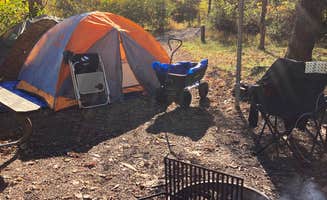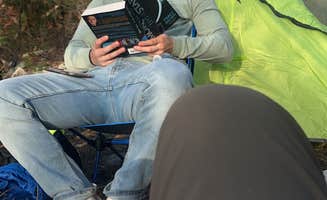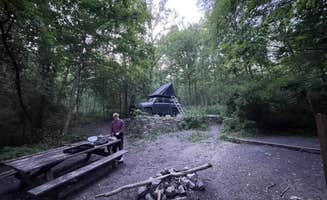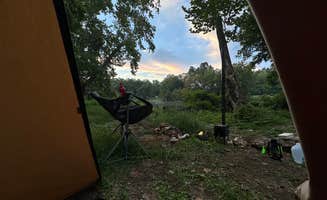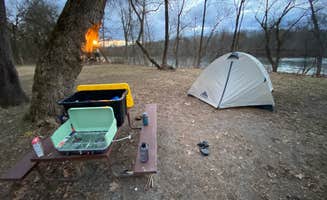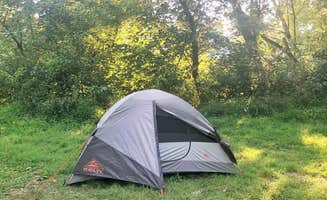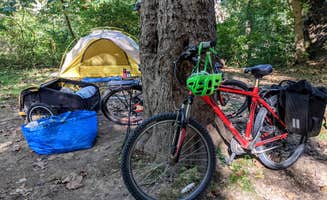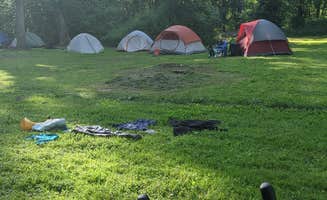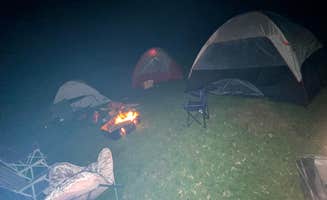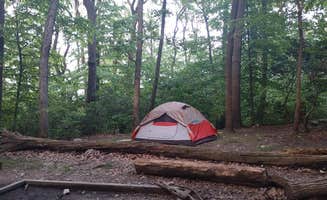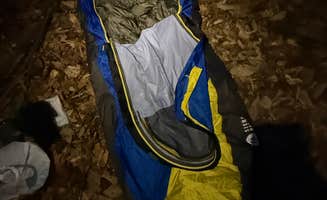Dispersed tent camping near White Post, Virginia provides access to backcountry experiences in national forest land within a 30-minute drive. The region sits at the northern end of the Shenandoah Valley between the Blue Ridge Mountains to the east and Appalachians to the west. Most primitive sites range from 800-1,500 feet in elevation, featuring mixed hardwood forests with oak and hickory trees dominant throughout the camping areas.
What to do
River activities: South Fork Shenandoah River offers swimming, fishing, and paddling opportunities directly from campsites. "We swam and fished. There were plenty of walk in sites beyond ours," notes one visitor who stayed at "the very last car camping site on the road."
Hiking trails: Access the Appalachian Trail from multiple campsites in the region. A camper at Veach Gap - GWNF - Backpacking Site shared that it's "about 4 miles up, so not too bad" to reach the ridgeline campsite, though cautions "there is no water after the first mile" so proper planning is essential.
Historical exploration: Visit nearby Civil War battlefields and historic towns. From Antietam Creek Campground, "the perks are its location to nearby attractions and the river/creek" with one visitor noting it's "nice being so close to cool historical stuff."
What campers like
Ridge views: Campers repeatedly highlight the panoramic vistas from higher elevation sites. One backpacker described the Veach Gap ridgeline views as "breathtaking" with "1,200ft elevation difference from the trailhead to the site."
Secluded camping: Little Crease Shelter offers a mix of accessibility and solitude. A regular visitor described it as "far enough in that it's secluded, but the hike's short enough and easy enough to make it a little more luxurious than a regular backpacking trip."
Stargazing opportunities: Clear night skies away from urban light pollution create excellent conditions for astronomy. The higher elevation sites generally offer better viewing conditions, with ridgeline campsites providing unobstructed horizons.
What you should know
Water sources: Pack adequate water or bring filtration systems. At Veach Gap, a camper advises "pack up all the water you will need for the day/evening/morning" since reliable sources are scarce.
Site selection systems: Little Fort Campground uses a unique system where "you select a campsite by flipping a washer on a hook on the board from green to red. Flip it back when you leave."
Cell service gaps: Prepare for limited or no connectivity. At Little Fort, a camper reported "no service at all starting from about 20 minutes away from the site" despite having Verizon.
Access roads: Many camping areas require driving on unpaved roads. One visitor to Little Fort Campground mentioned the "long and winding road to get there with no service so be cautious."
Tips for camping with families
Short backpacking options: Sky Meadows State Park Campground provides an entry-level backpacking experience. "They have wheelbarrows you can borrow to help bring in your stuff from the car," notes one family camper, making the mile hike more manageable with children.
Wildlife viewing: Keep eyes open for local fauna throughout your stay. One camper at Sky Meadows reported, "At night I saw white-tailed deer and heard owls and cattle! During the day I saw/heard SOOO many birds."
Site spacing consideration: For families needing extra space or privacy, look for campgrounds with well-separated sites. A Sky Meadows visitor noted "the hills are fantastic for helping each site feel like a little private oasis."
Tips from RVers
Length restrictions: Most primitive sites near White Post can only accommodate smaller RVs and camper vans under 25 feet. The narrow access roads with limited turning areas make larger rigs impractical for these locations.
Leveling challenges: Prepare for uneven parking at most dispersed sites. One South Fork Shenandoah River visitor cautioned that while their "92 ford camper made it, just go slow" on the rough access road.
Creek crossing awareness: Several access routes require crossing shallow water features. During spring or after heavy rains, these crossings may become impassable for lower-clearance vehicles, making tent camping White Post options more limited for RVers during wet periods.


